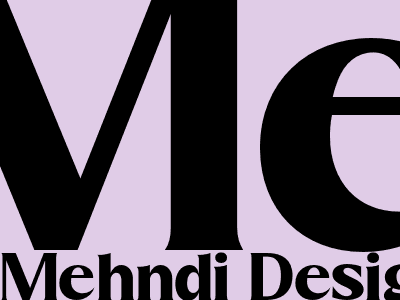Mehndi Design: A Cultural and Artistic Expression
Introduction
Mehndi, also known as henna tattoo, is a form of body art that has been practiced for centuries in South Asian and Middle Eastern cultures. It involves applying a paste made from the leaves of the henna plant to create intricate and temporary designs on the skin. Mehndi is often associated with special occasions such as weddings and festivals, where it holds cultural and symbolic significance.Cultural Significance of Mehndi
Mehndi serves various cultural purposes in different communities. In many cultures, it is seen as a symbol of beauty, fertility, and prosperity. It is often applied to brides before their wedding as a way to bless and protect them. Mehndi is also used during festive occasions to enhance the beauty of the participants and create a sense of celebration.
The designs of mehndi have cultural and regional variations. In some regions, intricate floral patterns are common, while in others, geometric designs are preferred. The designs often incorporate traditional motifs that symbolize love, happiness, and good luck.
Types of Mehndi Designs
There are numerous types of mehndi designs, each with its own unique characteristics and significance. Some of the most popular types include:
- Bridal mehndi: Elaborate and intricate designs that cover large areas of the body, typically applied to the hands, feet, and legs of brides.
- Rajasthani mehndi: Known for its bold and geometric patterns, often featuring peacocks, elephants, and other traditional motifs.
- Arabic mehndi: Characterized by vine-like patterns with intricate curves and swirls, often inspired by Arabic calligraphy.
- Pakistani mehndi: Similar to Arabic mehndi but with a heavier emphasis on floral elements and more intricate details.
- Contemporary mehndi: Modern designs that incorporate elements from different styles and often include freehand motifs and abstract patterns.
Application Process and Aftercare
Mehndi is applied as a paste made from dried henna leaves that have been ground into a fine powder. The paste is then mixed with water and essential oils to create a thick consistency that can be easily applied to the skin. The paste is applied using a thin brush or applicator, and the designs are allowed to dry for several hours.
After the mehndi paste has dried, it will begin to stain the skin. The intensity of the stain varies depending on the quality of the henna, the amount of time it is left on the skin, and individual skin chemistry. The stain typically lasts for a few days to a week before fading away.
To ensure the longevity of the mehndi design, it is important to avoid washing or scrubbing the area where the mehndi is applied. It is also important to keep the design dry and protected from moisture.
Benefits and Symbolism of Mehndi
Mehndi is not just a form of body art; it also has several benefits and symbolic meanings:
- Cooling effect: The henna paste has a cooling effect that can help to soothe and refresh the skin.
- Antibacterial properties: Henna extract has antibacterial properties that can help to prevent infections.
- Purification: In some cultures, mehndi is believed to have purifying properties and is used during religious rituals.
- Protection: Mehndi is often applied to protect against negative energy and the evil eye.
- Good luck and prosperity: In some cultures, mehndi is believed to bring good luck and prosperity.
Conclusion
Mehndi is a beautiful and intricate form of body art that holds cultural, artistic, and symbolic significance. Its intricate designs and vibrant colors have captivated people for centuries, making it an integral part of many traditional and festive occasions.
Whether you are adorned with a traditional bridal mehndi design or a contemporary abstract pattern, mehndi is a way to express your creativity and connect with your heritage. Embrace the beauty and significance of this ancient art form and let it enhance your special moments.

Comments